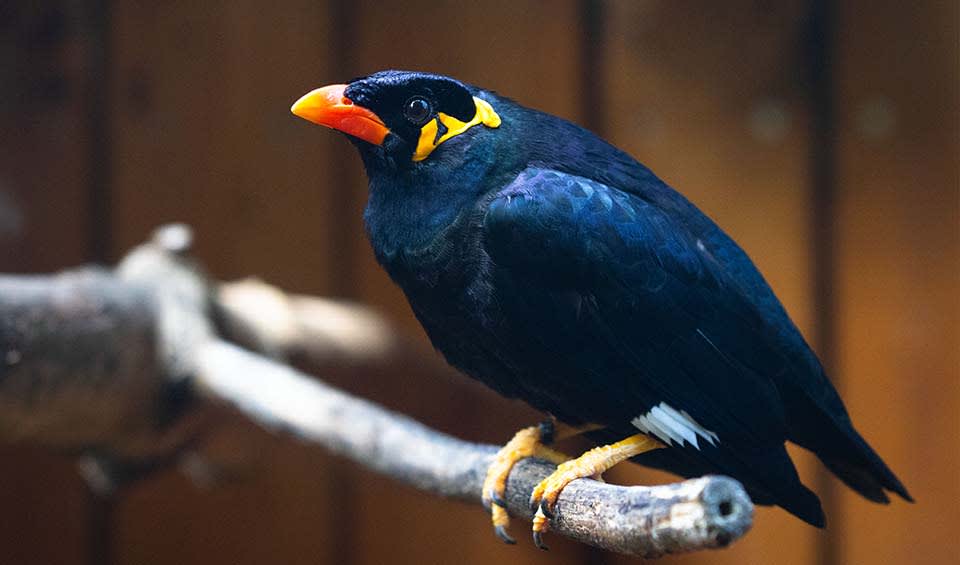A striking, clever, and famously talkative bird found in the forests of South and Southeast Asia. With its glossy black feathers, bright yellow wattles curling behind its head, and a strong orange beak, this bird looks as bold as it sounds. In the right lighting, its feathers shimmer with a greenish or purplish shine, adding to its flashy appearance. It has a stocky build, powerful feet for gripping tree branches, and a loud, attention-grabbing call that echoes through the forest canopy.
In the wild, common hill mynas live in humid, tropical forests, often at the edge of clearings or near human settlements. They are social birds, usually seen in pairs or small flocks, and they are very vocal with each other. Their natural calls are a wild mix of whistles, gurgles, screeches, and chirps — almost like a bird having fun with sound effects. These calls aren’t just noise; they’re how the mynas communicate with each other, warn of danger, or mark their territory. When kept as pets (which is unfortunately common and often harmful), hill mynas can learn to mimic human voices with eerie accuracy, copying not just words but even tone, laughter, and emotion.
Common hill mynas are mostly fruit eaters. They love figs, berries, bananas, and other soft fruits, but they also snack on nectar and the occasional insect. They’re excellent fliers and agile in the treetops, able to move quickly from branch to branch with ease. For nesting, they use tree holes, often laying two or three eggs. Both parents help raise the chicks, feeding them fruit and carefully guarding the nest. In the wild, their calls help keep families and flocks connected across the dense forest.
Distribution
 Bangladesh
Bangladesh Official estimate
Official estimate
 Bhutan
Bhutan Brunei
Brunei Cambodia
Cambodia China
China Hong Kong
Hong Kong India
India Indonesia
Indonesia Laos
Laos Macao
Macao Malaysia
Malaysia Myanmar
Myanmar Nepal
Nepal Philippines
Philippines Puerto Rico
Puerto Rico Singapore
Singapore Thailand
Thailand Vietnam
VietnamAnything we've missed?
Help us improve this page by suggesting edits. Glory never dies!
Suggest an editGet to know me
Terrestrial / Aquatic
Altricial / Precocial
Polygamous / Monogamous
Dimorphic (size) / Monomorphic
Active: Diurnal / Nocturnal
Social behavior: Solitary / Pack / Flock
Diet: Carnivore / Herbivore / Omnivore / Piscivorous / Insectivore
Migratory: Yes / No
Domesticated: Yes / No
Dangerous: Yes / No




